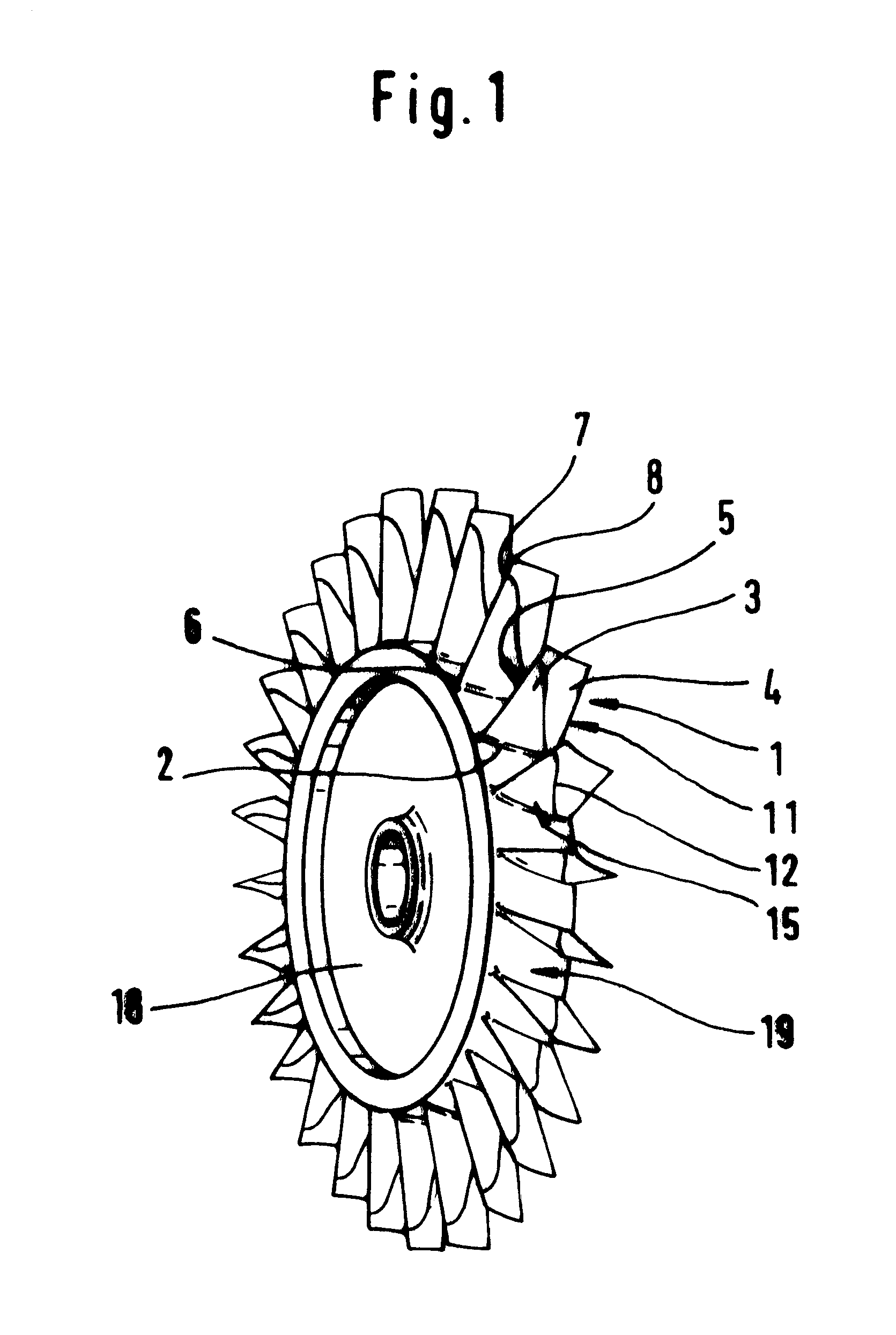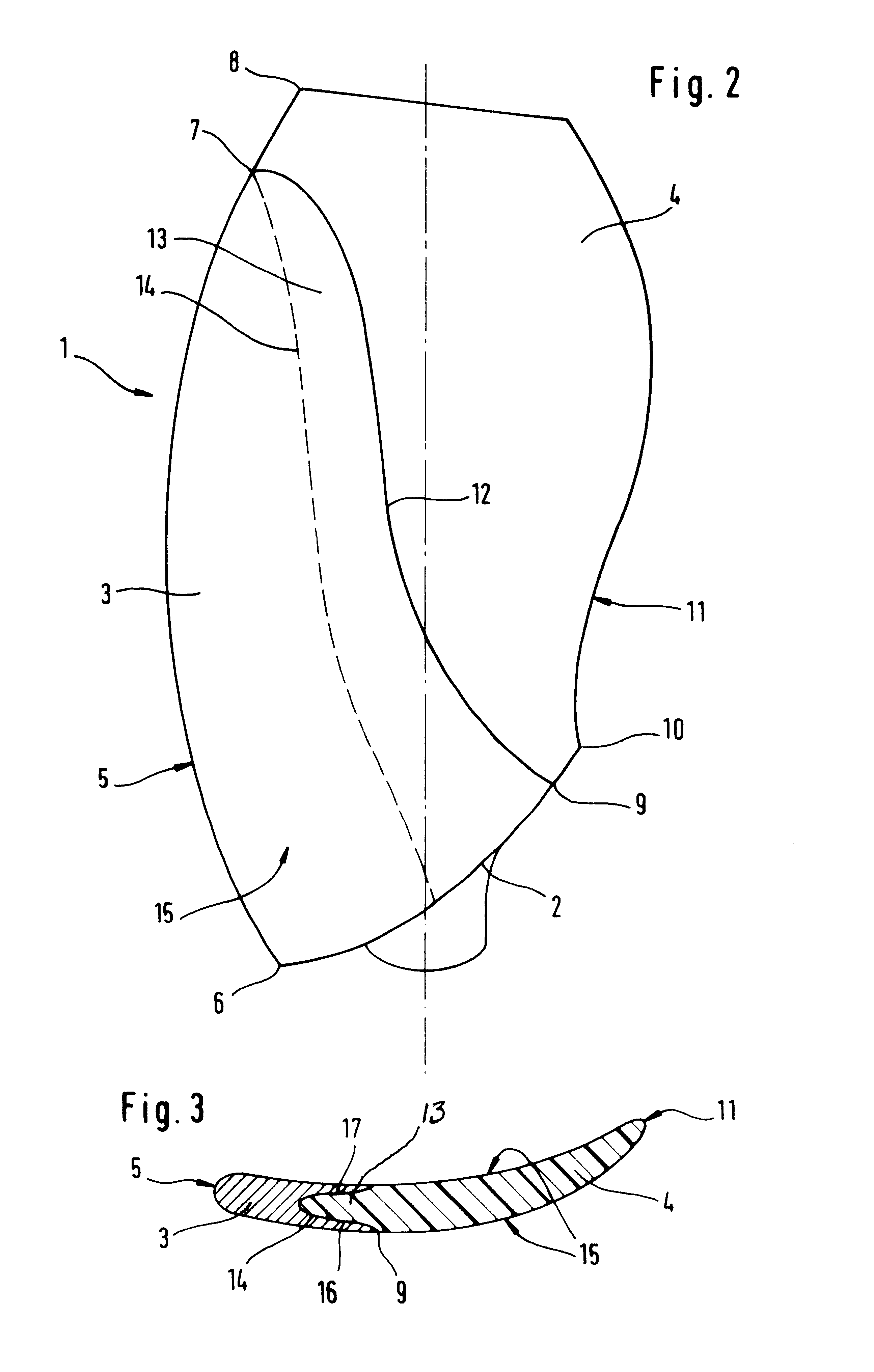Rotor with integrated blading
a rotor and integrated technology, applied in the direction of liquid fuel engines, marine propulsion, vessel construction, etc., can solve the problems of inability to provide the necessary emergency power of the propulsion plant, lack of ductility of the blade section of synthetic materials, and inability to meet the needs of smaller fan rotor blades operating at higher speeds
- Summary
- Abstract
- Description
- Claims
- Application Information
AI Technical Summary
Benefits of technology
Problems solved by technology
Method used
Image
Examples
Embodiment Construction
FIG. 1 shows an example embodiment of the rotor according to the invention, for example a compressor rotor, with integrated blading for a flight propulsion plant. A rotor carrier 18 is a compressor disk or ring. A plurality of rotor blades 1 is attached to a circumferential surface 19 of the rotor carrier 18. Rotor blades 1 extend essentially radially from the rotor carrier 18. The rotor blades 1 comprise respectively a metallic first blade section 3 and a second blade section 4 of fiber-reinforced synthetic material. The metallic first blade section 3 and the compressor disk 18 can, for example, be milled from a solid piece, or can be initially manufactured separately and then integrally connected to one another by a suitable method. In this context induction welding with high frequency current is a suitable choice in which a forged microstructure is formed in a joint plane between the compressor disk 18 and the rotor blade 1.
According to the embodiment shown in FIG. 1, the metalli...
PUM
 Login to View More
Login to View More Abstract
Description
Claims
Application Information
 Login to View More
Login to View More - R&D
- Intellectual Property
- Life Sciences
- Materials
- Tech Scout
- Unparalleled Data Quality
- Higher Quality Content
- 60% Fewer Hallucinations
Browse by: Latest US Patents, China's latest patents, Technical Efficacy Thesaurus, Application Domain, Technology Topic, Popular Technical Reports.
© 2025 PatSnap. All rights reserved.Legal|Privacy policy|Modern Slavery Act Transparency Statement|Sitemap|About US| Contact US: help@patsnap.com



